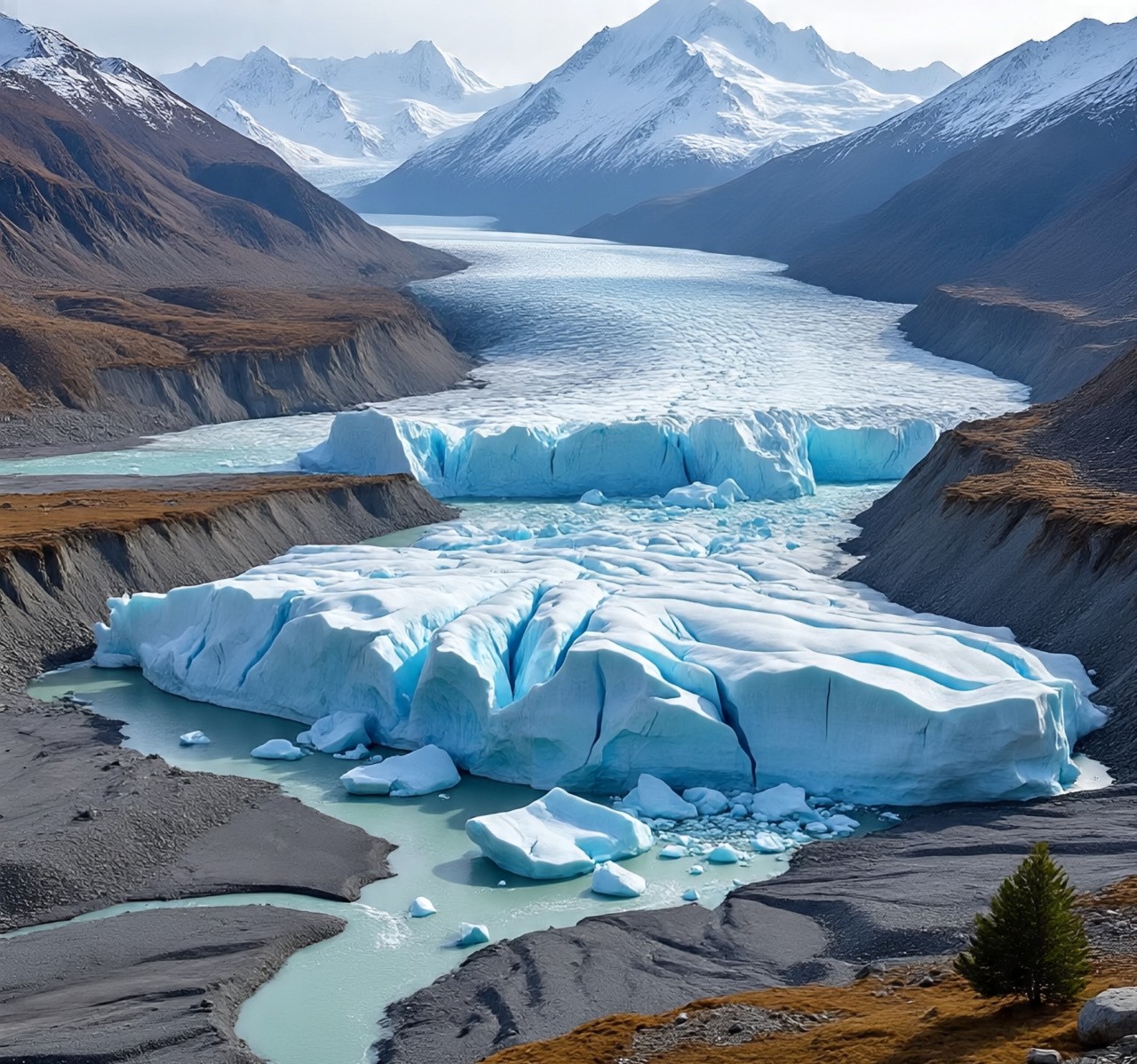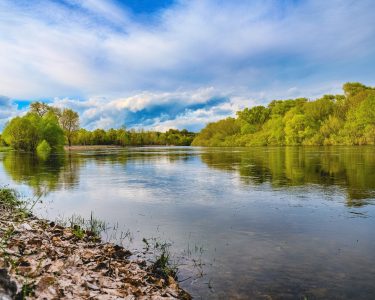Climate Change in Gilgit‑Baltistan: How Communities Are Being Tested and What Must Be Done
Climate Change in Gilgit‑Baltistan: How Communities Are Being Tested and What Must Be Done
Gilgit‑Baltistan (GB) sits at the roof of Pakistan. Spanning the Karakoram, Himalaya and Hindu Kush ranges, the region contains some of the world’s largest glaciers outside the polar regions and feeds the Indus River. This unique geography makes GB critically important for national water supplies but also leaves its communities extremely vulnerable to global warming. Recent extreme weather in 2025 has shown how climate change is already reshaping lives there.
A region on the climate frontline
Melting glaciers, glacial lakes and heatwaves
GB’s frozen reservoirs are rapidly shrinking. A large mixed‑methods policy analysis notes that rising temperatures accelerate glacial melt, causing more frequent glacial lake outburst floods (GLOFs) that threaten villages and infrastructure[1]. Pakistan hosts over 13,000 glaciers covering more than 13,500 km², the largest mass of ice outside the poles[2]. Scientists report that glaciers in the Hindu Kush and Himalayas melted 65 % faster in 2011–2020 than in the previous decade, with melt rates of 10–30 m a year in the Himalayas[3]. Warming exposes more rock, creating feedback that hastens melting[4].
The consequences are already visible. In July 2025 Gilgit‑Baltistan baked under unprecedented heat: temperatures reached 48.5 °C in Chilas and 46.1 °C in Bonji[5]. Prolonged heatwaves dried up water sources and triggered GLOF events and cloudburst‑induced flash floods that damaged homes, farmland, roads and irrigation channels[6]. Local elders recall mountains that were once covered with glaciers in the 1980s and 1990s now replaced by debris and moraines, while chunks of ice floated down the Hassanabad nullah this year[7]. Studies cited by Pamir Times suggest glaciers in Pakistan are melting up to 60 m per year, with 23 % ice lost since 1960 and projections that up to 60 % of glaciers could vanish by 2100[8].
Floods, landslides and water scarcity
As glaciers retreat and heat intensifies, vast glacial lakes form. The United Nations reports that the northern region now has over 3,000 lakes, 33 of which are at high risk of suddenly bursting; more than 7 million people in Gilgit‑Baltistan and Khyber Pakhtunkhwa live downstream[9]. In 2025 a heat‑triggered GLOF in Diamer District destroyed homes and farmland, and nine people were killed[10]. Landslides caused by destabilised slopes frequently block roads and rivers.
Winter snowpack is also diminishing. Villagers in Gishgish (Ghizer District) told Pamir Times that the below‑normal snowfall melted quickly in spring, leading to dry water sources and dying crops[11]. Trees dropped their leaves early and seasonal grasses dried, undermining livestock feed[12]. The result is water insecurity in communities that depend on glacial melt for drinking and irrigation.
Agriculture, biodiversity and livelihoods at risk
Agriculture remains the main livelihood for most residents. Yet changing weather patterns, reduced water availability and soil erosion are undermining crop yields and food security[13]. Unpredictable rains bring flash floods that wash away fields and damage irrigation systems[13]. High‑altitude ecosystems host unique flora and fauna which are extremely sensitive to temperature and precipitation changes; scientists warn that climate change threatens this biodiversity[14].
The humanitarian impact is severe. A photo essay by Community World Service Asia reports that Gilgit‑Baltistan has been “battered by glacial lake outburst floods, landslides and relentless monsoon rains,” leaving entire communities uprooted and livelihoods lost[15]. The 2025 monsoon season has already resulted in over 804 deaths across Pakistan since late June[16], with many casualties in mountainous regions. People displaced by GLOFs often lose not only their homes but also their livestock, crops and social networks.
Deforestation and unplanned development amplify risks
Human activity compounds these climate hazards. Illegal logging, fuelwood collection, agricultural expansion and infrastructure construction have reduced Pakistan’s tree cover by 8 % (over 95 km²) since 2001[17]. In Gilgit‑Baltistan, deforestation accelerates in winter when timber is smuggled for heating and construction[18]. Forests act as carbon sinks and stabilise slopes; their loss increases landslide and erosion risks[19]. Rapid population growth and unplanned settlements encroach on floodplains, narrowing river channels and amplifying flood damage[20].
Where the problem lies
Gilgit‑Baltistan’s vulnerability stems from a combination of physical exposure and institutional gaps. Climate change is warming high mountain regions faster than global averages, yet the region lacks a tailored climate policy; national plans do not address its specific vulnerabilities[21]. Limited financial resources and technical expertise hamper local governments’ ability to implement adaptation measures[22]. Poor infrastructure and weak communications hinder disaster response, and many communities have low awareness of climate risks[23]. Deforestation, unsustainable tourism and outdated building practices exacerbate natural hazards. Despite the severity of impacts, remote communities receive little attention from national media and donors.
What can be done
Early warning systems and disaster preparedness
Saving lives hinges on warning people early. In March 2025 the United Nations Development Programme and China launched the Tailored Intelligence for Actionable Early Warning Systems (TIAEWS) project. It will establish 70 automatic weather stations, 70 hydrometric stations and 70 warning posts to create a robust early‑warning network[24]. The project integrates data management, community awareness and improved governance so that vulnerable communities receive and understand alerts[25]. UN officials stress that more than 7 million people in GB and KP are at risk from GLOFs and need robust early warning[9]. Strengthening the capacity of the Provincial Disaster Management Authority (PDMA), rescue services and volunteer brigades—through training, equipment and funding—will improve emergency response[26].
Reforestation and sustainable resource management
Reversing deforestation is critical. The Pamir Times commentary urges strict regulation of logging, provision of subsidised alternative fuels to reduce reliance on firewood, and mass reforestation drives in autumn and spring[27]. Plantations along roadsides, parks and public spaces can mitigate urban heat and erosion[28]. Controlled grazing and afforestation of arid land will stabilise soils and restore carbon sinks[29]. At the national level, Pakistan has pledged to cut greenhouse‑gas emissions by 50 % by 2030, but power generation still relies heavily on fossil fuels[30]. Expanding renewable energy and enforcing emission targets will slow warming and reduce pressures on glaciers.
Climate‑resilient infrastructure and land‑use planning
Communities need infrastructure that can withstand new extremes. Policymakers should invest in flood defences, reinforced roads, resilient bridges and sustainable water management systems[31]. Building codes must be enforced to prevent construction in hazardous zones near rivers and on unstable slopes[32]. Housing for internally displaced families should be constructed on safer ground with basic facilities[33].
Climate education and community‑based adaptation
Researchers argue that agriculture, water management, disaster risk reduction and biodiversity conservation should be central to a regional climate strategy[34]. Scaling up community‑based initiatives—such as water conservation, afforestation and climate‑resilient farming—can build resilience[35]. Education programmes tailored to local languages and customs will raise awareness of climate risks and promote adaptive practices[36]. By combining indigenous knowledge with scientific research and policy support, communities can better prepare for and adapt to changing conditions.
Sustainable tourism and livelihood diversification
Tourism brings income but also strains fragile ecosystems. Encouraging eco‑friendly tourism, enforcing waste management and restricting overdevelopment will preserve natural landscapes[37]. Farmers should be supported to shift from water‑intensive to drought‑resistant crops[38] and to diversify livelihoods through horticulture, value‑added products and services that reduce reliance on climate‑sensitive agriculture. Financial and technical assistance from government and NGOs is vital to support this transition and ensure equity.
Towards a climate‑resilient Gilgit‑Baltistan
The evidence is clear: Gilgit‑Baltistan is experiencing some of the most dramatic impacts of climate change in Pakistan. Its glaciers are melting, lakes are bursting, heatwaves are intensifying and water supplies are shrinking. Communities face a cascade of hazards—floods, landslides, droughts—while livelihoods dependent on agriculture, livestock and tourism hang in the balance. Deficiencies in governance and planning amplify these threats.
Yet there is hope. Investments in early warning systems, disaster preparedness and resilient infrastructure can save lives. Reforestation and renewable energy can stabilise slopes and mitigate emissions. A tailored regional climate strategy—backed by education, community‑based adaptation and sustainable economic development—can empower the people of Gilgit‑Baltistan to adapt while preserving their unique culture and environment. National and international actors must prioritise this remote region, not only because it is on the frontlines of climate change, but also because its glaciers sustain millions of people downstream. The challenges are formidable, but with coordinated action and solidarity, Gilgit‑Baltistan can navigate a future shaped by a changing climate.




1 Comment